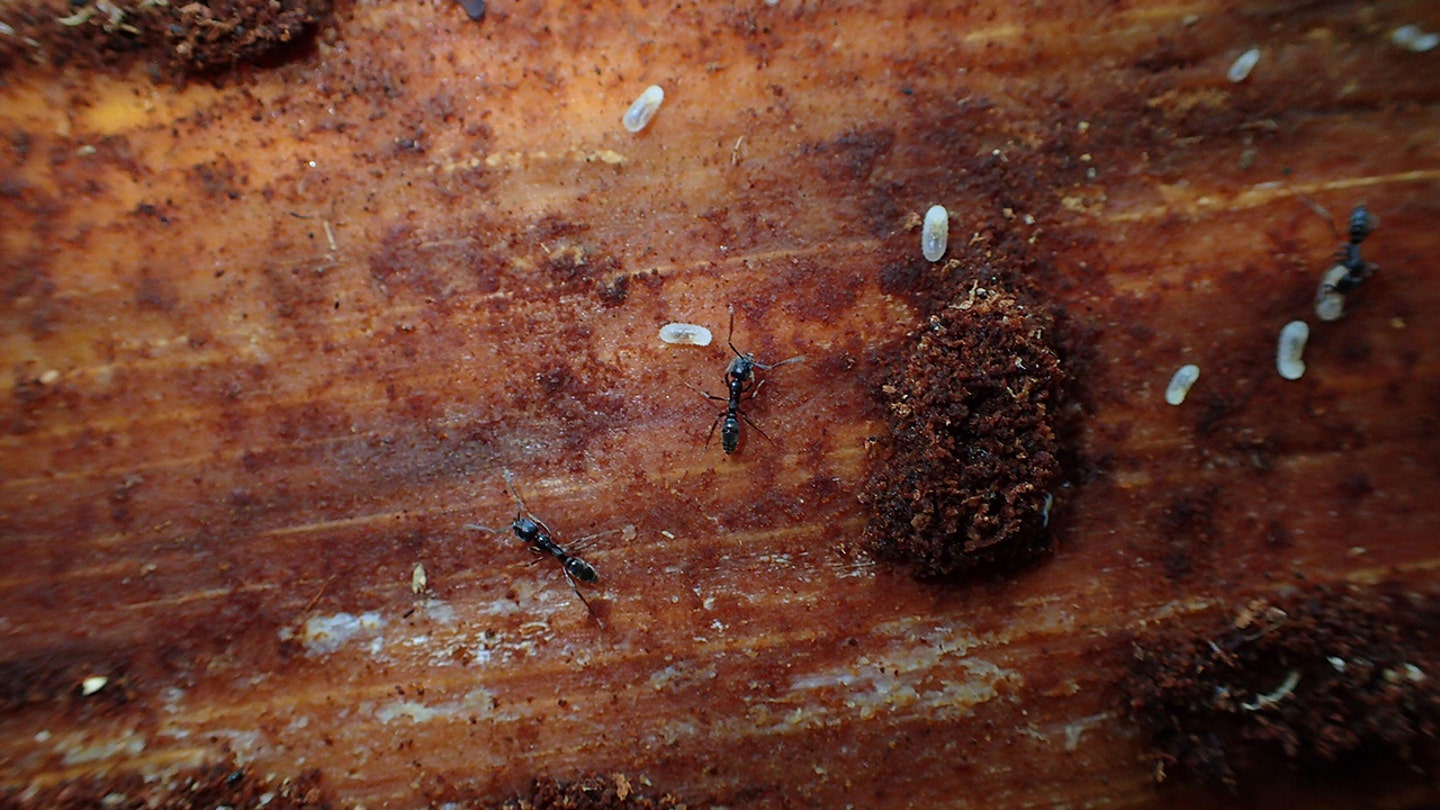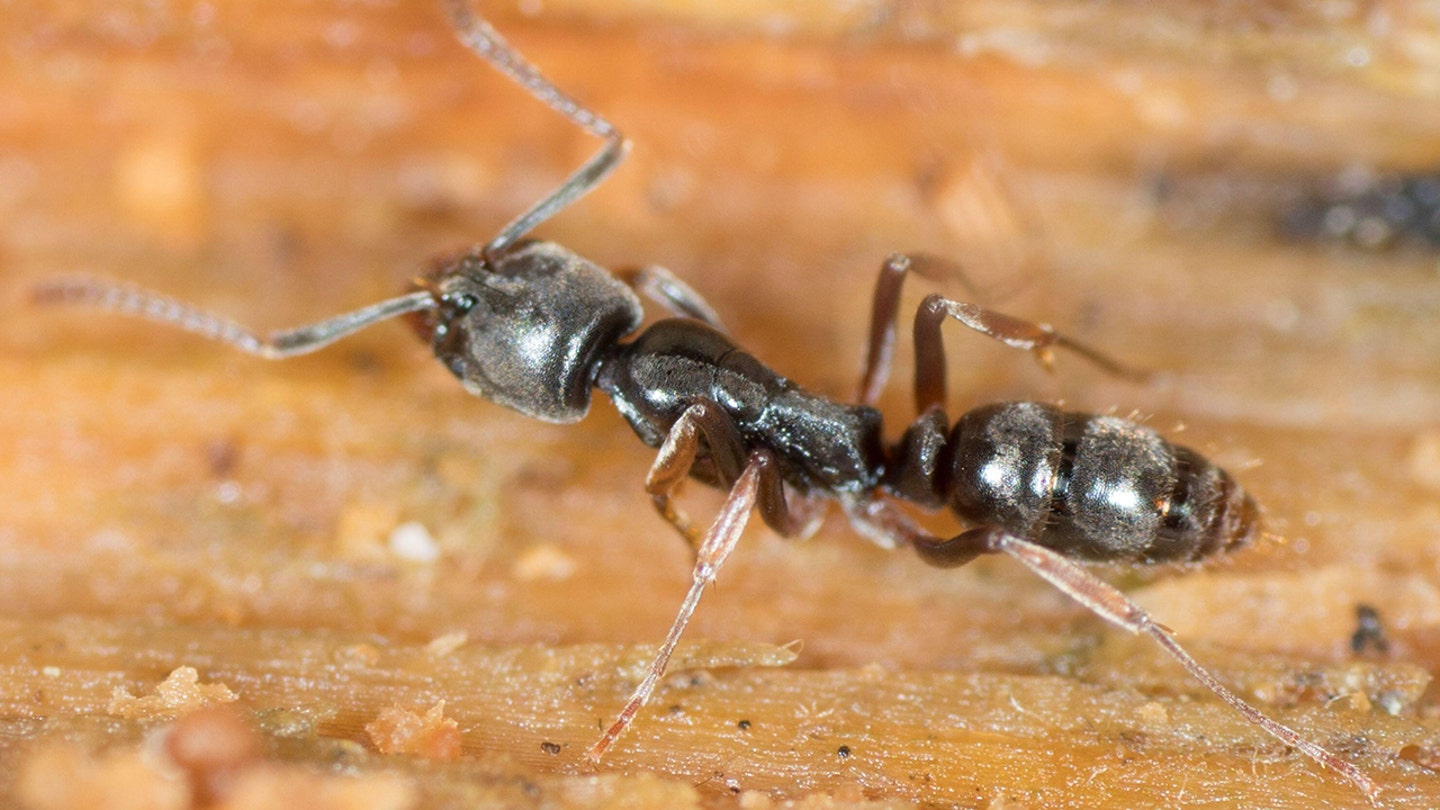An invasive species spreading across America has created a “medically important” and “life-threatening” threat, according to experts.
Originally found in places like China and Korea, the Asian needle ant was first introduced to America in the 1930s, but was overlooked for nearly a century, according to Dan Suiter, a Georgia-based entomologist.
“It never really garnered a lot of attention,” Suiter, a professor of urban entomology at the University of Georgia, told Fox News Digital.
INVASIVE FISH COMPETITION RETURNS WITH ANGLERS MAKING ‘REEL REWARDS’
The species has now spread to 19 U.S. states, and its bites sent three people to the hospital with anaphylactic shock last year, the expert warned.
While it has spread mostly to southeastern states, researchers have also identified it in Washington. There is also a report from Texas, but it needs verification, according to antmaps.org.
The Asian needle ant has spread to at least 19 states across America, experts warn. (Alamy)
“This is something I thought needed to be brought to people’s attention because it’s just a hidden little critter,” Suiter said. “You know, it’s down in the leaf litter. It’s in shaded areas with hardwood trees.”
The U.S. Forest Service stated in a research report that the sting of the Asian needle ant is its “most troubling characteristic.”
MAN FINDS ‘CANDY-LIKE’ DIAMOND WHILE EXPLORING ARKANSAS STATE PARK: ‘CHANCE OF A LIFETIME’
“The sting … it’s odd,” Suiter told Fox News Digital. “I’ve been stung by it … the pain will go away and then it comes back … there have been cases where the pain will come back days later.”
“The pain will go away and then it comes back … [sometimes] days later.”
While only three cases last year have been traced back to the Asian needle ant, the professor said it’s possible there are more.
“I suspect there are people who have shown up in emergency rooms where physicians just didn’t know what happened … and it was an ant sting,” he said.
Environmental concern
While most ants follow a “trail,” the Asian needle ant comes on its own, and is “mostly predatory.”
“It’s a cryptic ant,” said Suiter. “You’ll just see a single ant kind of wandering around, almost looking lost.”

The Asian needle ant’s sting can cause anaphylactic shock, and the source can sometimes go unrecognized, given the ant’s small size. (Alamy)
Unlike other ant species, the Asian needle ant infests undisturbed forests, where it nests under logs, stones and leaf litter.
The Federal Register defines invasive species as those that are nonnative (or alien) to the ecosystem and whose introduction causes, or is likely to cause, economic or environmental harm or harm to human health.
CLICK HERE TO GET THE FOX NEWS APP
“Of great concern is the apparent ability of Asian needle ants to displace ant species that are critical seed dispersers,” writes the Forest Service.
According to Suiter, the Asian needle ant has “decimated” ant populations in native habitats all over American forests.

The ants hide under patio stones, logs and leaf debris. They are especially active in the summer months, according to an expert. (Alamy)
When Asian needle ants invade forests, they can also impact native plants’ ability to grow appropriately.
They can also be found near homes and businesses under mulch, pavers, landscape timbers and other objects, according to the Forest Service.
What to do if you’ve been stung
People who are hypersensitive to other stinging insects may be at increased risk of anaphylaxis from Asian needle ant stings and should exercise caution, according to the Forest Service.
CLICK HERE TO SIGN UP FOR OUR HEALTH NEWSLETTER
If possible when stung, collect the insect and bring it with you when being treated by a medical professional so they can confirm the cause.
For more Health articles, visit www.foxnews.com/health
If you haven’t been stung but suspect you’ve come across the invasive Asian needle ant, it’s recommended to contact your local county extension agent, who can connect you with appropriate resources to identify the bug.

